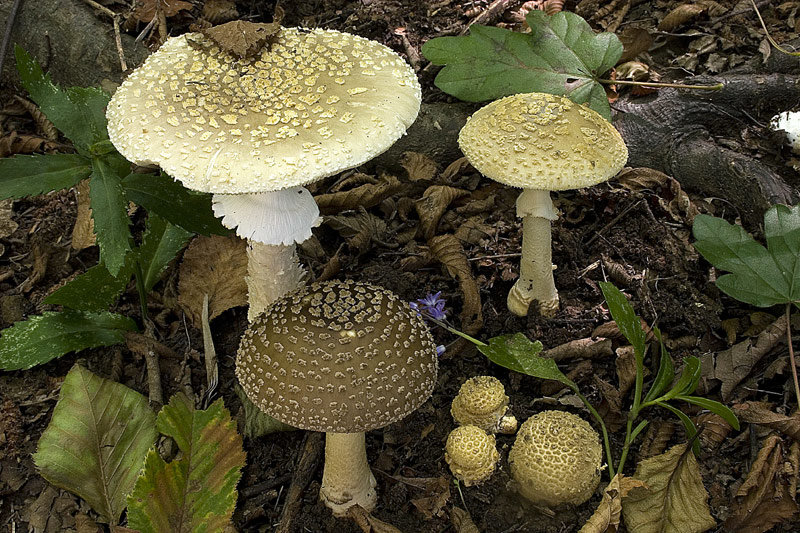Rough fly agaric (Amanita franchetii)
- ផ្នែក៖ Basidiomycota (Basidiomycetes)
- ផ្នែករង៖ អាហ្គារីកូម៉ីកូទីណា (Agaricomycetes)
- ថ្នាក់៖ Agaricomycetes (Agaricomycetes)
- ប្រភេទរង៖ Agaricomycetidae (Agaricomycetes)
- លំដាប់: Agaricales (Agaric ឬ Lamellar)
- គ្រួសារ៖ Amanitaceae (Amanitaceae)
- ពូជ៖ អាម៉ានីតា (អាម៉ានីតា)
- ប្រភេទ: Amanita franchetii (Amanita rough)

Rough fly agaric (Amanita franchetii) – a mushroom belonging to the Amanitov family, the genus Amanita.
Rough fly agaric (Amanita franchetii) is a fruiting body with a semi-circular, and later – an outstretched hat and a whitish leg with yellowish flakes on its surface.
The diameter of the cap of this flu is from 4 to 9 cm. It is quite fleshy, has a smooth edge, is covered with a skin of a yellowish or olive hue, and itself has a brown-gray color. The mushroom pulp itself is white, but when damaged and cut, it becomes yellowish, exudes a pleasant aroma, and has a good taste.
The stem of the mushroom has a slightly thickened bottom, tapers upward, initially dense, but gradually becomes hollow. The height of the mushroom stem is from 4 to 8 cm, and the diameter is from 1 to 2 cm. The hymenophore part, located on the inside of the mushroom cap, is represented by a lamellar type. The plates can be located in relation to the leg freely, or slightly adhere to it with a tooth. They are often located, characterized by an expansion in their middle part, white in color. With age, their color changes to yellowish. These plates contain white spore powder.
The remains of the bedspread are represented by a weakly expressed volva, which is distinguished by its looseness and dense growth. They have a grayish yellow color. The mushroom ring is characterized by an uneven edge, the presence of yellow flakes on its whitish surface.
Rough fly agaric (Amanita franchetii) grows in forests of mixed and deciduous type, prefers to settle under oaks, hornbeams and beeches. Fruiting bodies are found in groups, grow on the soil.
The fungus of the described species is common in Europe, Transcaucasia, Central Asia, Vietnam, Kazakhstan, Japan, North Africa and North America. The fruiting of the rough fly agaric is most active in the period from July to October.
There is no reliable information about the edibility of the mushroom. In many literary sources, it is designated as an inedible and poisonous mushroom, so it is not recommended to eat it.
The rare distribution of the rough fly agaric and the specific features of the fruiting body make this type of fungus unlike other varieties of mushrooms from the genus Fly agaric.
At this point in time, it is not known for certain whether the rough fly agaric is inedible or, conversely, an edible mushroom. Some of the authors of books on mycology and mushroom science note that this type of mushroom is inedible, or nothing is reliably known about its edibility. Other scientists say that the fruit bodies of the rough fly agaric are not only completely edible, but also have a pleasant aroma and taste.
In 1986, research scientist D. Jenkins discovered the fact that in the Persona herbarium the rough fly agaric is represented by the type Lepiota aspera. In addition, E. Fries created a description of the fungus in 1821, in which there was no indication of the yellowish tint of Volvo. All these data made it possible to classify the fungus Amanita aspera as a homotypic synonym for the fungus Lepiota aspera, and as a heterotypic synonym for the fungus of the species Amanita franchetii.









